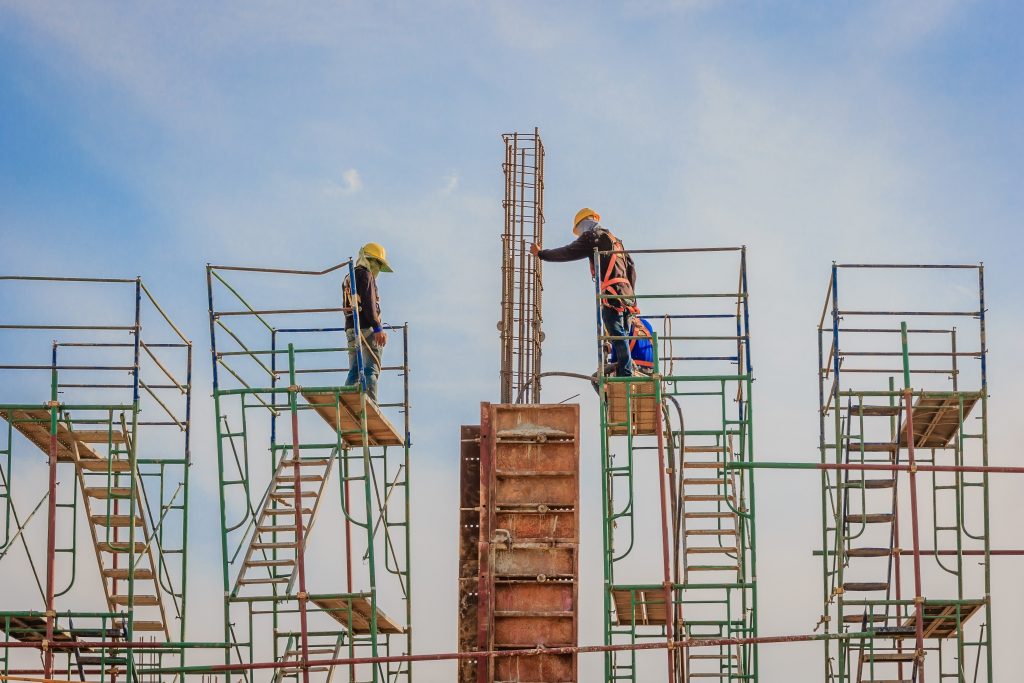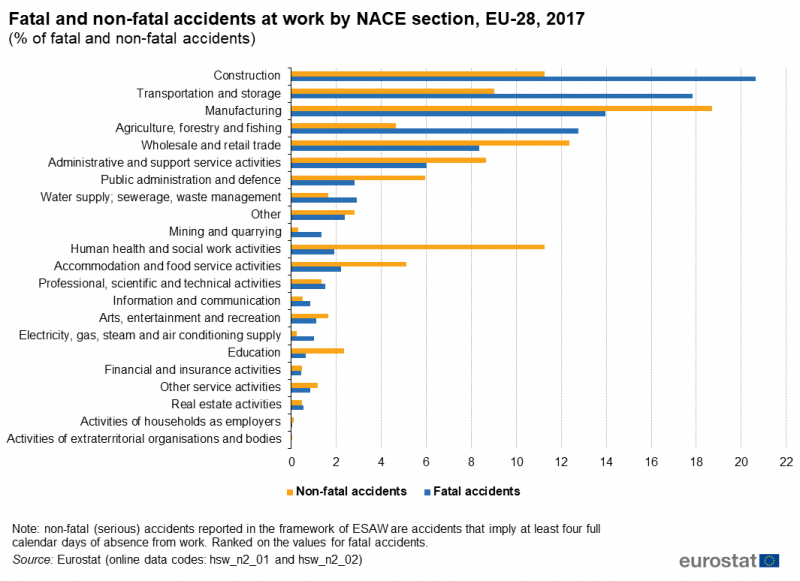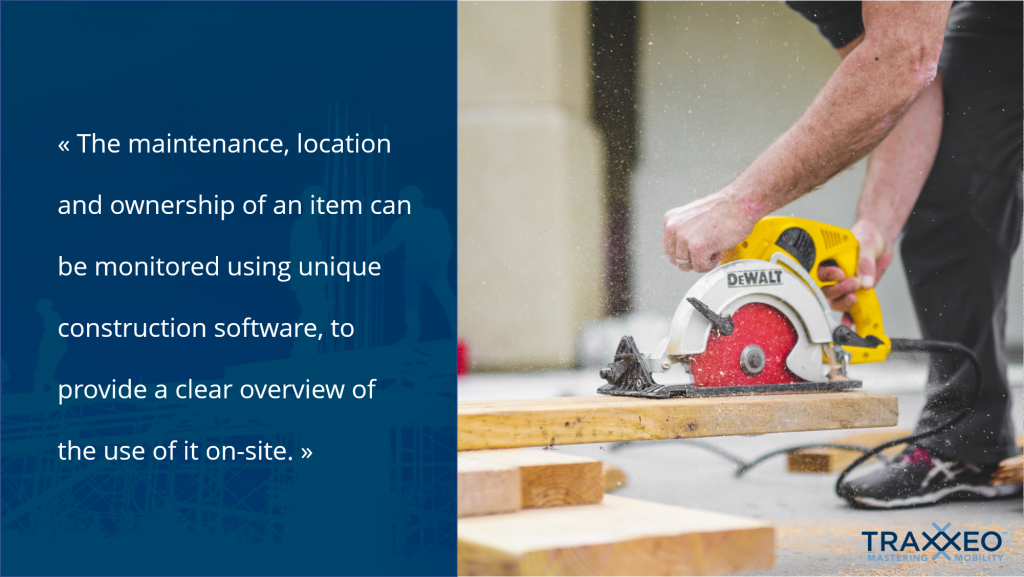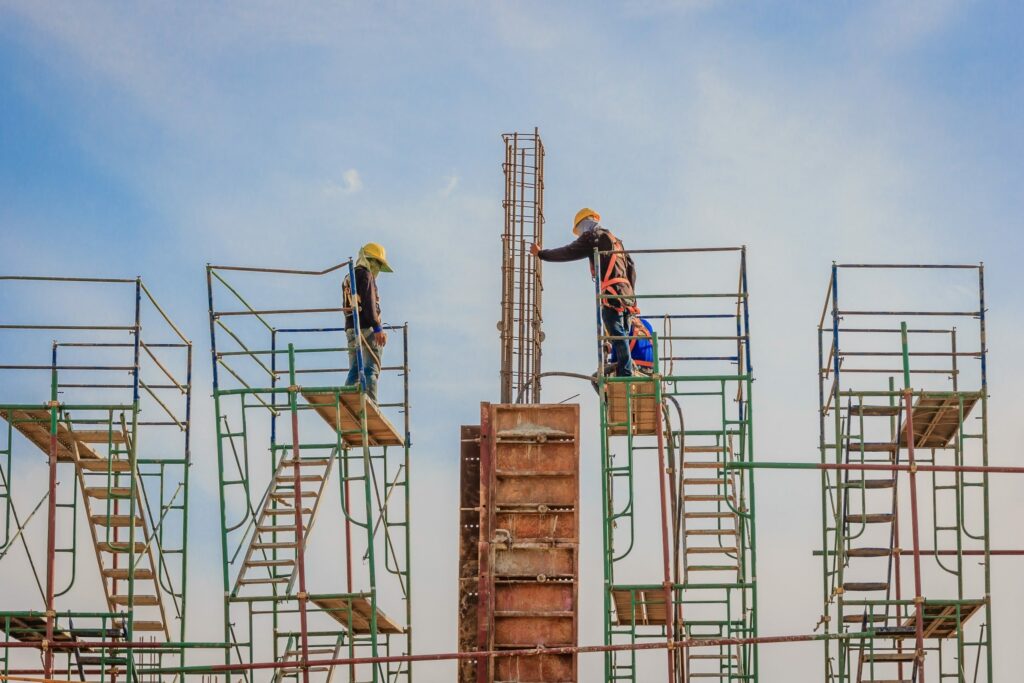
The construction sector represents one of the most dangerous environments to work in. However, the use of bespoke resource management software can be a very cost-effective way to improve construction site safety and security, alongside providing other benefits.
The nature of the work being undertaken on a construction site (for example, at height, moving large volumes of material or with electricity) and the tools and equipment being used mean that the consequences of an accident can be significant or even fatal. But the good news is that the cost of investing in improvements to your construction site safety and security is likely to be much lower than the cost associated with a serious accident.
Consequences of an accident on-site
Unfortunately, construction site safety is all too often overlooked on a project. This is despite the fact that the construction industry is associated with most fatal accidents at work, along with a high rate of non-fatal accidents:

Out on-site, there is potential danger everywhere and at any time. Because of this, workers are subjected to risks to their health and safety every day when working on-site. And to make matters even worse, the consequences of these accidents can be significant, ranging from a minor injury to a lifelong physical impairment, or even death. These consequences can be classified as:
- Direct – injury/death to worker(s), material damages, time lost on project, etc
- Indirect – staff shortages, lawsuits, delays, budget overruns, etc
Furthermore, there are also other costs in the long run, such as reputational damage, loss of trust by the workforce and client, and potentially strikes by workers.
But it’s not all doom and gloom, thankfully. The cost of putting the right safety and security measures in place is likely to be far lower than the cost of a serious accident. Here are our 5 best practices to ensure your construction site’s safety and security, and therefore avoid the damaging consequences of an accident.
1. Risk identification
Workers entering the construction site must be fully aware of all the possible hazards. This means that they must be capable of identifying the construction risks involved where they are working and also know how to prevent them.
In the US, the Occupational Safety and Health Administration (OSHA) has identified the 10 most frequently cited activities associated with accidents reported in the construction sector. Scaffolding is the first of these and the hazard occurs when scaffolds are not erected or used properly. OSHA estimates that better protecting workers from scaffold-related accidents would prevent approximately 4,500 injuries and 50 fatalities each year.
It is the responsibility of the site foreman to make sure every worker is fully aware of the hazards they are facing. The foreman must ensure that every worker is fully prepared for the work, without putting themselves or others in danger. If a worker is not fully prepared, they shouldn’t be allowed to enter the site.
2. Safety training
Although workers can learn a lot on-site, safety skills must be acquired before entering it. And the learning doesn’t stop there. Even an experienced worker should be regularly invited to refresh their knowledge about construction site security.
This training teaches workers how to identify and prevent risks (for example, using fall protection, or the proper use of scaffolds, ladders, etc). It is also a reminder of the importance of setting and respecting the safety rules.
It is the responsibility of both the foreman and the construction company to ensure workers cannot access a worksite without having undertaken the right safety training. Given the high risks and costs of accidents on a construction site, ensuring that workers are authorised to enter it can save a company considerable economic and reputational costs.

3. On-site equipment
Each worker should be able to execute a task by using the equipment that is best suited to it. In addition, this equipment should be in a satisfactory condition. Therefore, a construction company has the responsibility both to provide the right equipment for the task and to ensure that it is well maintained.
This means that all tools, equipment, material, etc must be identified and inventoried. Inventory control can be put in place to ensure that items are not misplaced or stolen, and to identify when they need maintenance. Also, ensuring that the items are stored in good condition will further increase safety in the workplace. Finally, knowing who is in charge of the equipment at any particular time is also a good way to reduce the risk of an accident.
The maintenance, location and ownership of an item can be monitored using unique construction software, to provide a clear overview of the use of it on-site.
4. Supervision
Although all workers should be able to identify and avoid hazards on-site, in practice it is often much more complicated than that. For example, a worker could become distracted, believe they “know better”, or simply not be fully alert or aware of a danger.
As a result, each site must be supervised by a qualified foreman, with strong supervision skills. The foreman should be capable of ensuring that the safety measures are followed, without exception.
5. Communication
The correct flow of vital information is key to avoiding an on-site accident. This information can relate to the status of a worker, in order to make sure that only authorised people enter the site. Other information can relate to the need for maintenance of equipment and therefore ensure that it remains in a satisfactory condition.
Also, it should be made clear to everyone on-site that security is a top priority. For example, assigning responsibility for equipment to an individual is a good way to make workers aware of their obligations regarding the proper use of it.
Overall, keeping track of what is happening on-site and relaying this information back to head office is a good practice to ensure that every safety measure is being followed.
Conclusion
The cost of putting the right safety and security measures in place is likely to be much lower than the cost of an accident. Due to the high risk of accidents in the construction sector, it is vital to prevent them by allocating an appropriate budget for such measures.
All sources of potential risk on-site must be identified and concrete actions must be put in place to prevent them. To do so in an efficient way, it can be beneficial to invest in the right construction software. This can help to ensure the administrative compliance of workers, correct maintenance of equipment, efficient flow of information and so on. Ultimately, the issue at stake is a clear overview of what’s happening on-site regarding the safety and security of your workers, which should never be undervalued.
